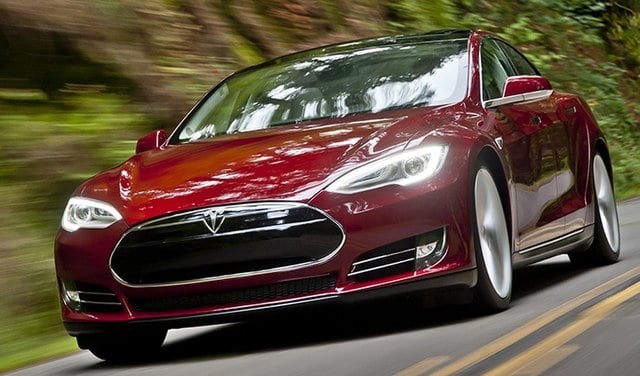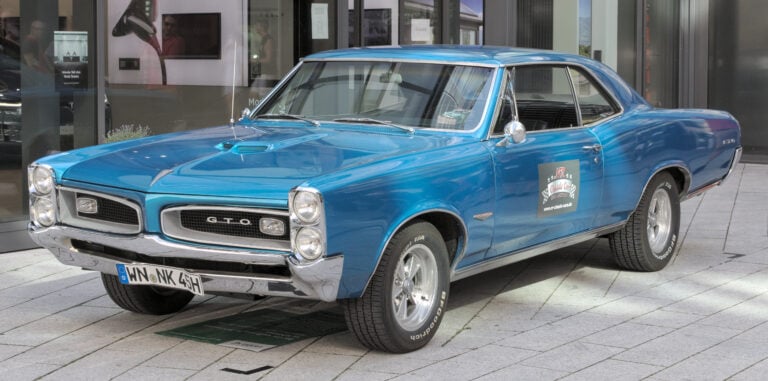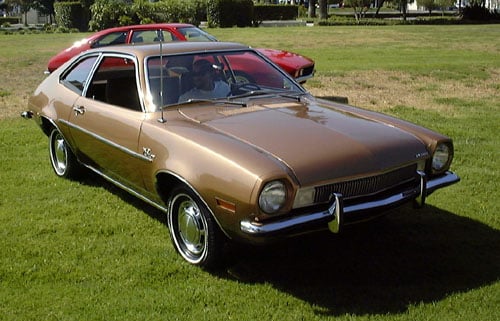30 Cars We Were Warned Not to Buy
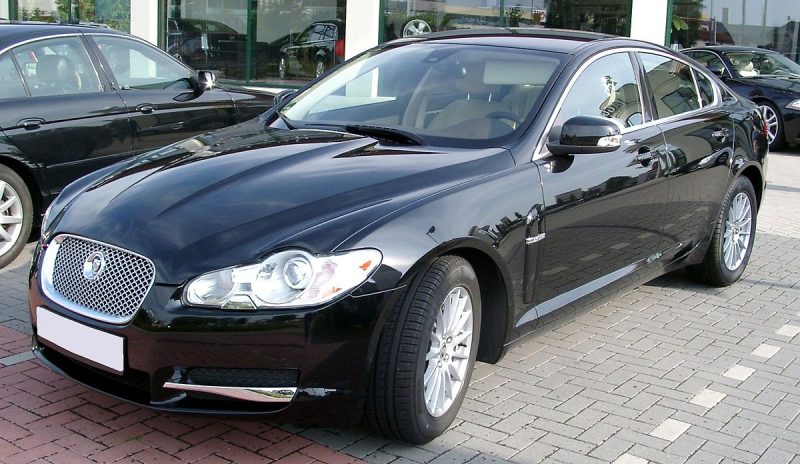
Purchasing a vehicle represents one of the most significant financial decisions many people make, yet certain cars carry hidden risks that can transform an exciting purchase into a costly mistake. Industry mechanics, automotive analysts, and consumer protection agencies regularly identify vehicles that consistently underperform in reliability, safety, or long-term value retention.
Auto experts have compiled extensive data on specific makes and models that present elevated risks for buyers, ranging from luxury vehicles with complex maintenance requirements to popular sedans with documented mechanical failures.
These professionals evaluate factors including repair frequency, parts availability, maintenance costs, and common failure patterns across different vehicle categories.
Their assessments cover everything from premium European sedans known for expensive upkeep to mainstream models with documented transmission problems and hybrid vehicles facing costly battery replacements.
Here are 30 cars auto experts warned us about — reordered from 30 down to 1:
30. Ford Fiesta – transmission issues
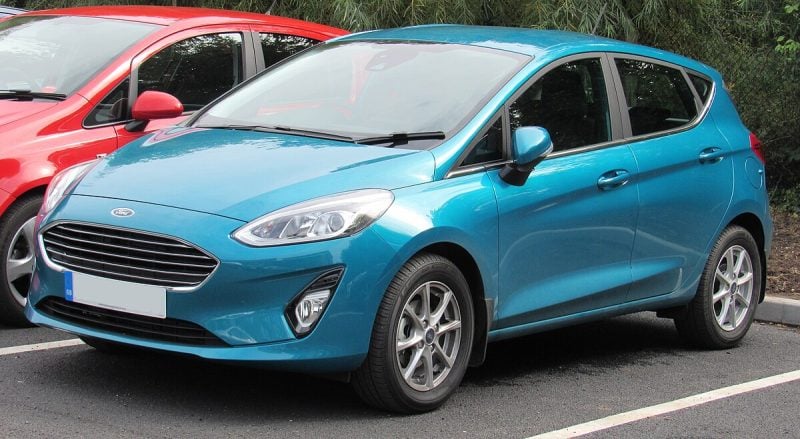
The Ford Fiesta developed serious transmission problems starting with the 2011 model year. Ford rushed to introduce automatic transmissions by modifying existing manual systems.
The PowerShift dual-clutch automatic transmission became notorious for its failures. This system affected Fiesta models from 2011 through 2016.
Owners reported sudden power loss followed by unexpected acceleration. The “Transmission Malfunction: Service Now” warning appeared frequently on dashboards.
Problems occurred across all mileage ranges. Some drivers experienced issues within the first 10,000 miles while others faced problems later.
Ford faced a class action lawsuit involving over 2 million affected customers. The company eventually offered settlements for transmission-related issues.
Auto experts consistently warned buyers about these problematic years. The transmission faults were so widespread they became the subject of extensive legal action.
29. Toyota Prius (older generations) – battery replacement costs
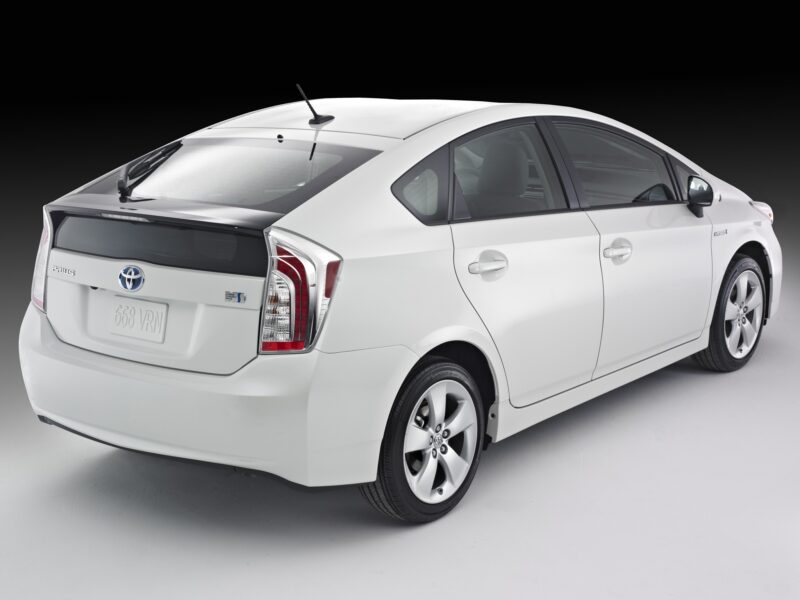
Older Toyota Prius models face significant battery replacement expenses that can shock owners. The high-voltage hybrid battery typically costs between $2,000 and $4,500 for a new unit.
Used battery options start around $1,500 plus installation labor. Remanufactured batteries for 2010-2015 models cost approximately $1,299, while new units with warranties reach $2,249.
Some sources report lower costs ranging from $1,023 to $1,235 including service. However, most owners should budget $2,000-$4,500 for this major repair.
The battery replacement represents a substantial portion of older Prius vehicles’ value. This expense often occurs during the vehicle’s lifespan, making it a crucial consideration for potential buyers of used hybrid models.
28. Honda Crosstour – resale and repair concerns
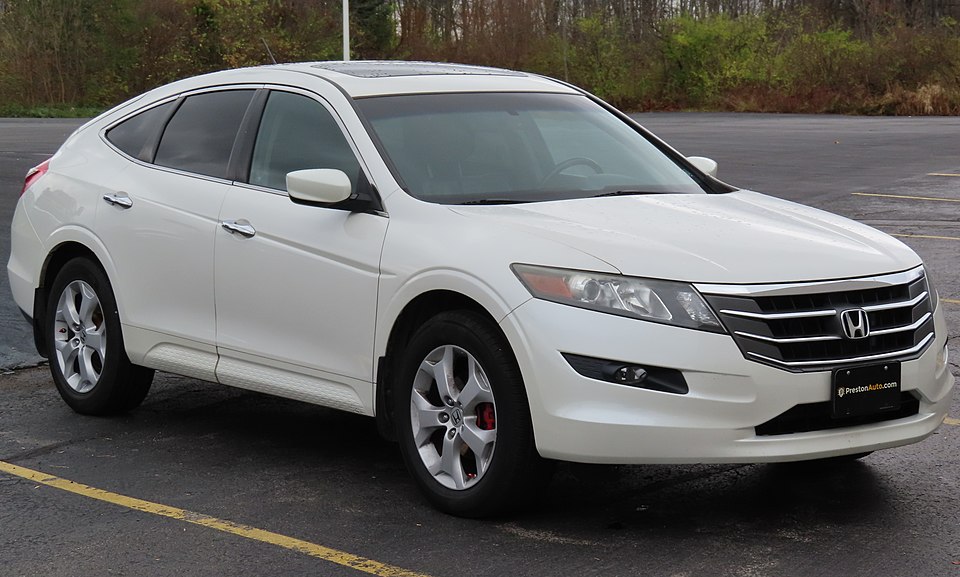
The Honda Crosstour faced significant resale value challenges due to its discontinued status in 2015. Low sales numbers contributed to poor market reception and limited demand in the used car market.
Repair costs present notable concerns for owners. Starter failure affects many 2013 and 2014 models, with replacement costs averaging $600 for parts and labor.
AC and heater problems frequently occur due to failed compressors. These repairs typically cost around $1,000 to complete, representing a substantial expense for owners.
The vehicle ranks 11th in reliability among 28 Honda models. Interior issues dominate the 55 complaints filed across four model years, indicating ongoing quality concerns.
Transmission problems plagued certain model years, requiring software updates and fluid replacement. These issues particularly affected vehicles operating between 20 and 45 mph speeds.
27. Dodge Charger (some models) – transmission reliability

The Dodge Charger has significant transmission problems in certain model years. The 2006, 2007, and 2008 models are particularly problematic for transmission reliability.
Owners report sticky gear shifts as a common early warning sign. These issues often lead to complete transmission failure if not addressed promptly.
The 2010 model year also experiences transmission-related concerns. Auto experts frequently cite these years as having the most transmission complaints from owners.
Transmission repairs on these Chargers can be expensive. Many owners face repeated visits to mechanics for transmission-related issues.
The problems appear most frequently in the early years of the modern Charger’s production run. Later model years show improved transmission reliability compared to these troubled years.
26. Kia Sorento (early models) – suspension issues
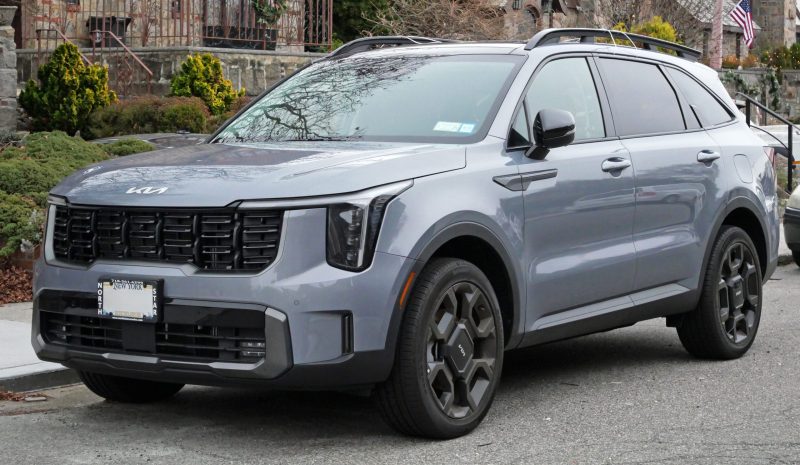
Early Kia Sorento models developed significant suspension problems that affected ride quality and handling. The 2003 and 2004 model years experienced particularly troublesome issues.
Owners reported persistent thumping and popping sounds from the suspension system. These noises occurred even at relatively low mileage, with some drivers experiencing problems at just 22,000 miles.
The suspension failures typically cost around $1,300 to repair and commonly occurred around 88,000 miles. However, problems often manifested much earlier in the vehicle’s life.
Drivers noticed increased swaying during turns and deteriorating ride quality. The suspension issues created an uncomfortable driving experience and reduced the vehicle’s handling performance.
Many owners found that dealerships initially dismissed these complaints as normal operation. This led to frustration among Sorento owners who experienced ongoing suspension problems that affected their daily driving experience.
25. Mazda 6 (certain years) – fuel pump failures
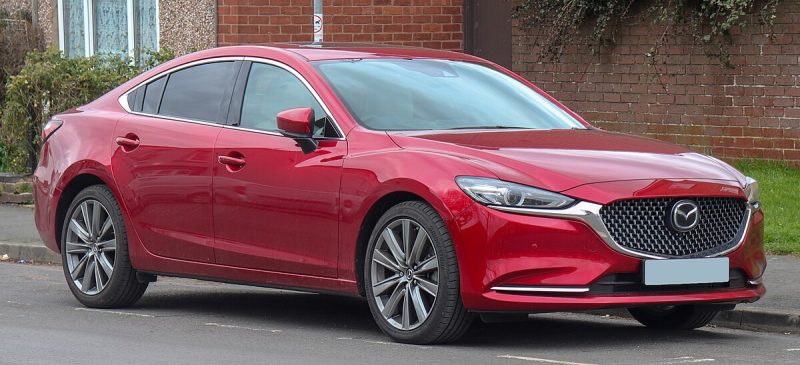
The Mazda 6 has experienced significant fuel pump problems across multiple model years. These failures primarily affect the low-pressure fuel pump system.
The main issue involves the impeller inside the fuel pump. This component can crack and deform over time, causing complete pump failure.
Mazda issued a major recall affecting over 121,000 vehicles. The recall covered 2018 Mazda6 sedans along with other Mazda models from similar years.
When the fuel pump fails, drivers experience hard starting and engine sputtering. The vehicle may lose power during acceleration or refuse to start entirely.
Replacement requires purchasing a new fuel pump from the dealer. The part is expensive, though installation typically takes only one hour of labor.
The 2008 Mazda 6 was specifically recalled for fuel system problems. These issues create potentially dangerous situations when the engine stalls unexpectedly.
24. Infiniti Q50 – costly repairs
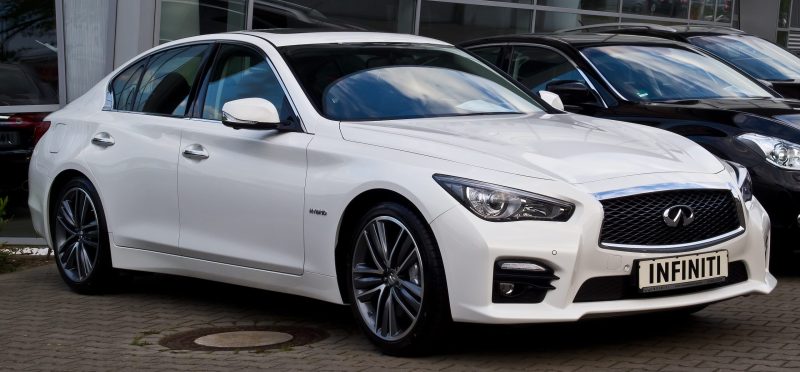
The Infiniti Q50 faces significant reliability challenges that result in expensive repair bills. Many owners report frequent issues with transmission and electrical systems across multiple model years.
Transmission failures occur unexpectedly in the Q50, often leaving drivers stranded. These repairs typically cost thousands of dollars and can happen without warning signs.
The 2014 model year stands out as particularly problematic. It ranks among the worst Q50 years due to brake and tire issues that require costly fixes.
Electrical system problems plague various Q50 model years. These complex issues often require specialized diagnostic work and expensive parts replacement.
Despite being positioned as a luxury sports sedan, the Q50’s repair costs can quickly exceed those of comparable vehicles. The 2024 model shows improvement with a 4.0 reliability rating and average repair costs of $648.
23. Mini Cooper (older models) – transmission expenses
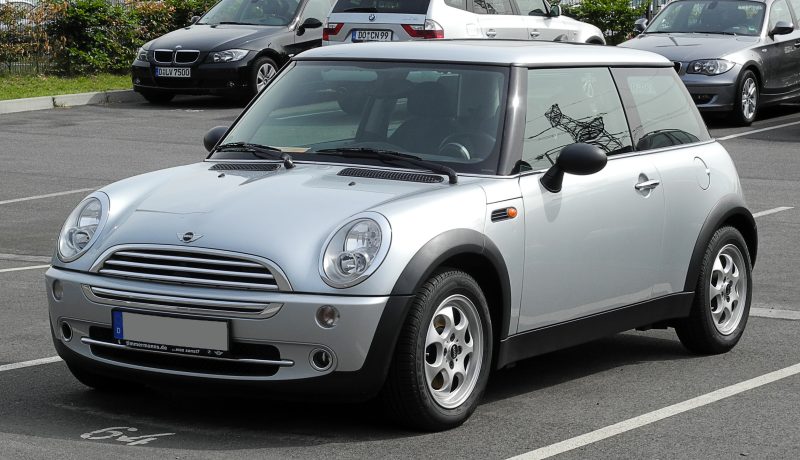
Older Mini Cooper models from 2007 to 2013 face significant transmission problems that create expensive repair bills. These vehicles frequently experience rough shifting, slipping gears, and complete transmission failures.
The transmission issues in these model years often require major repairs or full replacements. This makes ownership costs substantially higher than expected for a compact car.
Auto experts specifically warn against Mini Cooper models manufactured between 2002 and 2012 due to these reliability concerns. The transmission problems are among the most costly issues owners face.
Repair costs for Mini Cooper transmissions can reach thousands of dollars. The frequency of these failures makes older models particularly risky purchases for budget-conscious buyers.
Models from 2013 onwards show improved reliability with fewer reported transmission problems. This makes the older generation particularly problematic for potential owners.
22. Renault Koleos – parts availability problems
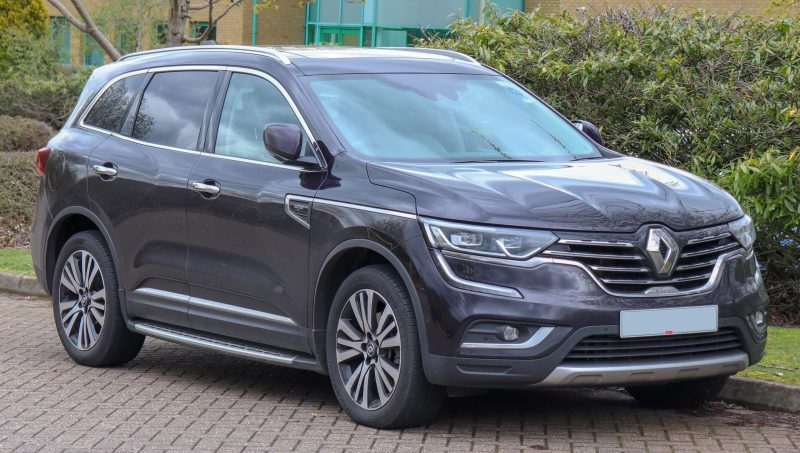
The Renault Koleos faces significant parts availability challenges that concern automotive experts. This issue stems from Renault’s limited dealer network in many regions.
Owners frequently encounter long wait times for genuine replacement parts. Common components like engine sensors and transmission parts can take weeks to arrive.
The 2009 and 2010 model years present particular difficulties. These vehicles require specific parts that are increasingly scarce in the aftermarket.
Independent repair shops struggle to source compatible components. This limitation forces owners to rely on official Renault dealerships for repairs.
The parts shortage becomes more pronounced for specialized systems. Climate control modules and electronic components often require ordering from overseas suppliers.
Repair costs increase when mechanics must wait for parts. Extended downtime adds frustration for owners who depend on their vehicles daily.
21. Peugeot 308 – maintenance costs
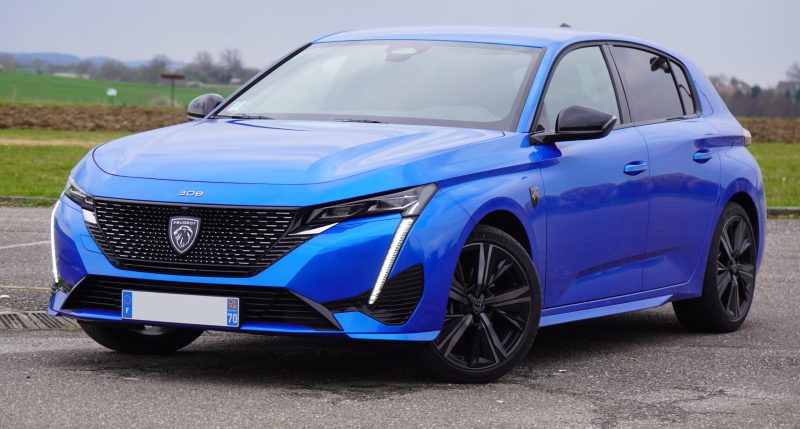
The Peugeot 308 carries higher maintenance costs compared to many competitors in its class. Auto experts frequently cite expensive repair bills as a primary concern for potential buyers.
Major maintenance services typically cost over $2,000. These comprehensive services include engine oil changes, multiple filter replacements, throttle cleaning, brake fluid, and transmission oil changes.
Routine servicing intervals occur every 16,000 miles or annually, whichever comes first. This schedule helps prevent larger repair issues but adds to ongoing ownership expenses.
Common problems across various model years contribute to elevated repair costs. Parts availability and specialized labor requirements often drive up service expenses at authorized dealerships.
The vehicle’s French engineering requires specific tools and expertise for proper maintenance. Independent mechanics may lack the necessary equipment, forcing owners toward higher-priced dealer services.
These factors combine to create above-average ownership costs that automotive professionals warn buyers to consider carefully.
20. Volvo XC90 (early years) – electrical system faults
The first-generation Volvo XC90 models from 2003-2005 experienced significant electrical system problems. These early years are particularly known for widespread electrical issues that affected multiple vehicle systems.
Water leakage represented a major concern in these models. Moisture penetration damaged the central electronic module, creating cascading electrical failures throughout the vehicle.
The 2004 and 2005 model years showed the highest frequency of electrical complaints. Ignition system problems were among the most commonly reported issues during this period.
Auto experts documented 282 electrical system complaints across early XC90 models. These problems often required expensive repairs and caused reliability concerns for owners.
The electrical faults in early XC90s affected critical vehicle functions beyond basic operations. Modern diagnostic equipment became essential for identifying and resolving these complex electrical issues in affected vehicles.
19. Jeep Grand Cherokee – high repair rates
Auto mechanics frequently warn against the Jeep Grand Cherokee due to its expensive repair costs. The vehicle consistently ranks poorly in reliability studies.
Consumer Reports includes both the Grand Cherokee and Grand Cherokee L on their list of least-reliable cars for 2024. Jeep ranks as the worst automaker out of 34 brands surveyed.
The Grand Cherokee has a reliability rating of 3.5 out of 5.0. Average annual repair costs reach $666, which is higher than many competitors in the midsize SUV segment.
Repair experts cite frequent mechanical issues that require costly fixes. The vehicle’s complex systems often fail prematurely, leading to expensive dealership visits.
Mechanics recommend avoiding certain model years due to recurring problems. The repair frequency and high costs make this SUV financially risky for many drivers.
18. Subaru Legacy (older models) – head gasket failures
The Subaru Legacy developed a troublesome reputation for head gasket failures, particularly in models manufactured between 1996 and 2004. Auto experts consistently warned buyers about this costly issue.
Approximately 20% of Legacy owners from this era reported head gasket problems. The failures typically occurred in vehicles equipped with the 2.5-liter naturally aspirated EJ series engines.
Common symptoms included oil leaks, coolant mixing, and engine overheating. These warning signs often appeared well before vehicles reached 100,000 miles.
The head gasket failures could lead to severe engine damage if left untreated. Repair costs were substantial, often turning affordable used cars into expensive financial burdens.
Legacy models from the late 1990s through early 2000s were most affected by this issue. The problem was significant enough that automotive experts routinely advised potential buyers to avoid these specific model years.
17. Acura TLX (some model years) – reliability issues
The Acura TLX has significant reliability problems in specific model years that automotive experts recommend avoiding. The 2015, 2016, and 2018 models rank among the worst years for this luxury sedan.
First-generation TLX models from 2015-2020 experience the most documented issues. The 2015 model year stands out as particularly problematic with numerous transmission complaints and mechanical failures.
Common problems across problematic years include dual-clutch transmission slippage, fuel pump failures, and crash sensor malfunctions. The 2016 model specifically suffers from transmission and brake system issues.
The TLX ranks 17th in reliability out of 20 Acura models. Owners have filed 244 complaints across seven model years, with transmission problems being the most frequent concern.
More recent models from 2020-2024 show improved reliability ratings. The 2020 TLX earned a 4.4-star reliability rating with refined powertrain performance.
16. Cadillac CTS – problematic electronics
The Cadillac CTS has developed a reputation for significant electronic system failures. Auto experts frequently cite electrical problems as one of the most common issues plaguing this luxury sedan.
The 2013 CTS model year stands out as particularly problematic for electronic malfunctions. Owners report center control panels that blink intermittently and sometimes go completely dark.
These electronic failures typically occur around 42,000 miles and cost approximately $1,100 to repair. The control system issues prevent drivers from adjusting basic vehicle functions like climate control and audio settings.
Radio module interface problems require expensive replacements, with parts alone costing up to $2,700. The 2009 and 2003 model years also show elevated rates of electrical system complaints.
Cadillac CTS owners have filed 256 documented problems related to electrical systems, making it a consistent concern across multiple model years.
15. Alfa Romeo Giulia – costly upkeep
The Alfa Romeo Giulia demands significantly higher maintenance costs compared to mainstream vehicles. Auto experts warn that Alfa Romeo vehicles cost around $1,198 per year to maintain, which is approximately 30% more than the average car.
Specialized parts and Italian engineering require qualified technicians familiar with the brand’s unique systems. This specialized service comes at a premium price point that catches many owners off guard.
The Giulia’s maintenance expenses vary based on several factors. Age and mileage significantly impact costs, with older models requiring more frequent repairs and service intervals.
Service costs at dealerships tend to be particularly high due to factory-trained technicians and specialized equipment requirements. Basic maintenance like oil changes and brake services cost more than comparable luxury sedans.
Owners should budget for higher-than-average service expenses throughout the vehicle’s ownership period. The combination of specialty parts and skilled labor requirements makes the Giulia expensive to maintain long-term.
14. Fiat 500 – Frequent Repairs
The Fiat 500 arrived in the US market in 2011 following the Fiat-Chrysler merger. Despite its charming design and city-friendly size, the compact car has developed a reputation for reliability issues.
Owners frequently report transmission problems as a primary concern. The clutch system experiences premature failures, requiring expensive replacements.
Engine difficulties plague many models. Overheating and oil leaks affect performance and lead to costly repairs.
Electrical problems create additional headaches for drivers. These issues often develop as the vehicle ages, contributing to higher maintenance costs.
Repair costs vary significantly but can range from basic fixes to major repairs exceeding $1,500. Many owners report needing frequent visits to service centers.
The car’s maintenance expenses tend to increase substantially after warranty expiration. These recurring repair needs have prompted mechanics to advise caution when considering a Fiat 500 purchase.
13. Chrysler 200 – poor build quality
The Chrysler 200 earned a reputation for substandard construction quality during its brief production run from 2011 to 2017. Auto experts consistently flagged the vehicle for persistent manufacturing defects and reliability concerns.
Owners frequently reported transmission problems, including rough shifting and premature failure. Electronic systems proved particularly troublesome, with dashboard malfunctions and electrical faults becoming common complaints.
The 2011, 2012, and 2013 model years experienced the most severe quality issues. These early models faced numerous recalls and documented problems that damaged consumer confidence.
Industry professionals noted that Chrysler’s build quality remained questionable compared to competitors. The 200’s construction problems contributed significantly to its commercial failure and early discontinuation.
Despite initial sales success in 2014 and 2015, the accumulating quality issues ultimately sealed the model’s fate in the marketplace.
12. Mitsubishi Outlander – reliability questions
The Mitsubishi Outlander has faced scrutiny from automotive experts due to inconsistent reliability across model years. While recent generations show improvement, earlier versions experienced significant mechanical issues.
CVT transmission problems plague multiple model years. These issues include premature failure, jerky shifting, and costly repairs that often exceed the vehicle’s value.
The second generation (2006-2012) introduced a new platform and 3.0-liter V6 engine. Despite improvements over the first generation, this era still experienced transmission and electrical problems.
Experts note that specific model years perform significantly worse than others. Buyers should research individual years carefully, as reliability varies dramatically within the Outlander lineup.
Recent models demonstrate better build quality and fewer reported issues. However, the vehicle’s mixed track record continues to raise concerns among automotive professionals who recommend thorough inspection before purchase.
11. Hyundai Sonata (early 2010s) – engine troubles
The 2010 Hyundai Sonata faced significant engine problems that concerned automotive experts. Owners reported issues with engines suddenly dying during operation.
Common complaints included power surges when shifting into drive or reverse. Many drivers experienced a noticeable lack of power during acceleration.
The most serious concern involved excessive oil consumption in certain engines. This defect eventually led to complete engine failure in some vehicles.
A class action lawsuit targeted Hyundai for producing defective engines in 2009-2010 and 2015-2021 Sonata models. The lawsuit specifically addressed engines that consumed excessive oil amounts.
Hyundai later addressed these problems through recalls and extended warranties. The company implemented software updates to reduce engine failures and fire incidents.
These early 2010s engine troubles made the Sonata a vehicle that experts recommended buyers approach with caution.
10. Nissan Pathfinder – expensive parts
The Nissan Pathfinder has earned a reputation among auto experts for its costly repair bills. This midsize SUV consistently ranks poorly for maintenance expenses compared to competitors in its class.
Transmission problems plague models from 2005 to 2010, requiring expensive replacements or rebuilds. These failures often occur without warning and can cost thousands to repair.
The timing chain guide system frequently wears out prematurely. This critical engine component demands immediate attention when it fails, resulting in substantial repair costs.
Air conditioning and heating system failures are common complaints. These climate control issues require specialized parts that carry premium price tags.
Fuel level sensors regularly malfunction across multiple model years. While seemingly minor, these sensors are expensive to replace and often require professional installation.
The 1999 model year presents additional concerns with severe rust problems affecting the body and frame. Rust damage leads to costly bodywork and structural repairs.
9. Ford Focus (certain years) – gearbox problems
The Ford Focus experienced significant transmission issues between 2010 and 2016. These problems specifically affected models equipped with the PowerShift dual-clutch automatic transmission.
The 2012 Ford Focus ranks among the worst model years due to severe transmission reliability issues. The 2013 model year also presents considerable gearbox concerns that buyers should avoid.
Ford’s PowerShift transmission caused problems with acceleration and deceleration capabilities. These issues created potential safety hazards during normal driving conditions.
The transmission problems became so widespread that regulatory agencies took action. Australia’s consumer protection commission pursued legal action against Ford in 2017 over these defects.
Ford responded to the crisis by extending warranties in some markets. The company offered warranties up to 240,000 kilometers or 10 years in certain regions to address customer concerns.
8. Chevrolet Cruze – transmission concerns
The Chevrolet Cruze has faced significant transmission problems across multiple model years. Auto experts have identified these issues as a major concern for potential buyers.
Statistics show that approximately 20% of Cruze owners report transmission-related problems during ownership. This high failure rate has made the vehicle a frequent target of automotive warnings.
The 2011-2014 model years experienced the most severe transmission issues. Owners reported problems including rough shifting, slipping gears, and complete transmission failure.
Many owners faced expensive repairs around 60,000-70,000 miles. Some required complete transmission replacements at relatively low mileage.
The 2018 model year also showed transmission problems despite being newer. Common symptoms included harsh shifting and gear slippage.
These transmission failures often resulted in costly repairs and safety concerns. The widespread nature of these issues prompted automotive experts to advise caution when considering the Cruze.
7. Volkswagen Passat – known for electrical faults
The Volkswagen Passat has accumulated 496 reported electrical system problems from owners. These issues typically cost around $3,500 to repair and commonly occur at 56,000 miles.
Specific model years show higher electrical failure rates. The 2006, 2012, and 2014 Passat models experience the most frequent electrical problems.
Common electrical faults include power supply terminal issues and engine control module coding errors. Owners report voltage problems and intermittent electrical failures that affect various vehicle systems.
The Passat’s electrical problems often involve the vehicle’s computer systems and power distribution. These failures can impact engine performance, dashboard functions, and other electronic components.
Despite being known for German engineering quality, the Passat’s electrical reliability concerns have prompted warnings from automotive experts. Regular maintenance can help prevent some electrical issues from developing.
6. Land Rover Range Rover – frequent mechanical problems
Range Rovers face numerous mechanical issues that automotive experts consistently warn buyers about. Engine problems rank among the most serious concerns owners encounter.
Common engine failures include overheating, oil leaks, and misfires. Turbocharger failures also plague many models across different years.
Air suspension systems frequently malfunction, causing costly repairs. These systems are complex and expensive to maintain properly.
Electrical issues create ongoing headaches for Range Rover owners. Build quality concerns affect multiple components throughout the vehicle.
Engine patterns show familiar problems across various model years. Some issues require immediate attention while others develop gradually over time.
The luxury SUV’s reputation for poor reliability stems from these recurring mechanical problems. Experts advise potential buyers to research specific model years thoroughly before purchasing.
Regular maintenance becomes critical for Range Rover ownership. Without proper care, minor issues can escalate into major mechanical failures requiring expensive repairs.
5. Mercedes-Benz S-Class (older models) – maintenance complexity
The Mercedes-Benz S-Class serves as the brand’s flagship luxury sedan and testing ground for cutting-edge technology. This innovation comes with significant maintenance challenges for older models.
Earlier S-Class generations from 1999-2006 and 2007 model years present notable reliability concerns. These vehicles feature complex electronic systems that require specialized diagnostic equipment and expertise.
The S-Class introduces advanced features like infrared night vision, adaptive suspension, and sophisticated climate control systems. When these components fail, repairs often demand dealer-level technical knowledge and expensive parts.
Maintenance costs escalate due to the vehicle’s premium positioning and intricate engineering. Common issues include air suspension failures, electrical problems, and engine management system malfunctions.
Independent mechanics frequently lack the specialized tools and training needed for proper S-Class servicing. This limitation forces owners toward authorized service centers, where labor rates and parts costs reach premium levels.
4. Jaguar XF – reliability issues
The Jaguar XF has faced significant reliability concerns throughout its production run. Auto experts consistently warn about problematic model years that plague owners with costly repairs.
Models from 2013-2016 represent the worst years for reliability. These vehicles suffer from widespread electronics failures, transmission problems, and engine issues that create expensive maintenance bills.
The XF’s electrical system frequently malfunctions, causing dashboard warning lights and component failures. Transmission problems include rough shifting and complete failure in some cases.
Engine issues range from timing chain problems to cooling system failures. These mechanical faults often require major repairs that can cost thousands of dollars.
The most reliable XF years are 2009-2012 and 2017-2020, which experienced fewer reported problems. However, even these better model years still carry higher maintenance costs compared to competitors in the luxury sedan segment.
3. Audi A6 – high repair costs
The Audi A6 carries significant maintenance expenses that concern automotive experts. Annual repair costs average $913, placing substantial financial burden on owners.
This luxury sedan ranks 8th out of 30 fullsize luxury vehicles for reliability with a 3.5 out of 5.0 rating. The high ownership costs stem from expensive parts and specialized labor requirements.
Extended warranty coverage can cost over $5,000 for six to seven years. Many owners consider self-insurance as a more economical alternative.
Common repair areas include engine components, transmission systems, and electronic modules. The average individual repair runs approximately $209, though complex issues cost significantly more.
Maintenance expenses increase notably as vehicles age and accumulate mileage. Owners can expect around $11,981 in maintenance costs over the first ten years of ownership.
Following manufacturer maintenance schedules and using quality parts helps control expenses. Finding experienced mechanics familiar with Audi systems reduces diagnostic time and associated labor costs.
2. BMW 7 Series – expensive maintenance
The BMW 7 Series carries significant maintenance costs that exceed industry standards. Owners should budget $750 to $1200 annually for regular maintenance alone.
During the first ten years, a 7 Series requires approximately $14,453 in maintenance and repairs. This figure sits $2,492 above the luxury car industry average.
The vehicle has a 40.39% likelihood of needing major repairs during its first decade. This rate performs 0.83% worse than comparable luxury vehicles in its class.
Engine and cooling system problems plague certain model years, particularly 2003-2006 and 2009-2011 generations. These issues often result in expensive repairs and extended downtime.
BMW ranks as the most expensive automotive brand to maintain, averaging $968 per year across all models. The 7 Series exemplifies this trend with its complex systems and premium components requiring specialized service.
1. Tesla Model S (early models) – costly repairs
The Tesla Model S from 2012 to 2017 presents significant repair cost challenges that auto experts consistently warn about. These early model years suffer from expensive component failures and limited repair options.
Door handle malfunctions plague these vehicles, requiring costly replacements. The touchscreen system frequently fails, resulting in repair bills that can exceed several thousand dollars.
Battery pack issues represent the most expensive repair concern. Replacement costs can reach $20,000 or more, making some vehicles economically unviable to fix.
Insurance companies increasingly total Model S vehicles due to repair costs exceeding the car’s value. Parts availability remains limited, extending repair times and increasing labor costs.
The combination of complex technology and expensive components makes routine maintenance more costly than traditional luxury vehicles. Service centers remain scarce in many areas, adding to repair expenses and inconvenience.
Criteria Auto Experts Use to Assess Car Reliability
Auto experts evaluate vehicle reliability through documented mechanical failures, financial impact over time, and safety performance metrics. These assessments combine real-world data from multiple sources to create comprehensive reliability ratings.
Mechanical Issues and Recalls
Auto experts track specific mechanical problems across different vehicle systems to identify reliability patterns. Engine and transmission failures receive the highest priority in reliability assessments because these repairs typically cost thousands of dollars.
Experts analyze recall frequency and severity to gauge manufacturer quality control. Vehicles with multiple recalls within the first three years often receive lower reliability ratings from organizations like Consumer Reports and J.D. Power.
Electrical system problems have become increasingly important as modern vehicles incorporate more technology. Experts monitor issues with infotainment systems, sensors, and electronic components that can leave drivers stranded.
Common mechanical criteria include:
-
Powertrain reliability (engine, transmission, drivetrain)
-
Suspension and steering components
-
Brake system performance
-
Electrical system stability
-
HVAC system functionality
Experts weight these problems based on repair frequency and cost impact. A vehicle with consistent minor issues may score lower than one with occasional major problems.
Long-Term Ownership Costs
Reliability experts calculate total ownership expenses beyond the initial purchase price. Maintenance frequency and repair costs over a five-year period form the foundation of long-term reliability assessments.
Experts examine warranty claim data to identify vehicles requiring frequent dealer visits. Cars with above-average warranty repairs typically indicate underlying reliability issues that continue after warranty expiration.
Parts availability and cost significantly influence reliability ratings. Vehicles requiring expensive or hard-to-find components receive lower scores because owners face higher repair bills and longer downtime.
Depreciation rates also factor into reliability assessments. Cars that retain value better often reflect superior build quality and fewer long-term problems.
Key cost factors include:
-
Average annual repair costs
-
Frequency of unscheduled maintenance
-
Parts and labor expenses
-
Resale value retention
Safety and Crash Test Performance
Safety performance directly impacts reliability ratings because structural integrity affects long-term durability. Experts review NHTSA five-star ratings and IIHS Top Safety Pick awards when evaluating overall vehicle dependability.
Crash test results reveal build quality issues that may not appear in routine driving. Vehicles with poor crash performance often exhibit substandard manufacturing that leads to other reliability problems.
Advanced safety features receive scrutiny for their reliability over time. Experts track failure rates of automatic emergency braking, blind spot monitoring, and adaptive cruise control systems.
Real-world accident data supplements laboratory testing. Vehicles with higher injury rates or structural failure patterns receive lower reliability scores regardless of initial crash test results.
Safety assessment criteria include:
-
Frontal and side impact protection
-
Rollover resistance ratings
-
Advanced safety system reliability
-
Structural integrity over time
How to Research a Car Before Buying
Expert reviews provide professional insights into vehicle performance and reliability issues. Maintenance histories reveal patterns of expensive repairs and long-term ownership costs that impact buying decisions.
Understanding Expert Reviews
Professional automotive reviewers test vehicles under controlled conditions and identify problems average consumers might miss. They examine engine performance, transmission quality, safety ratings, and build quality across thousands of miles of testing.
Key sources for expert reviews include:
-
Automotive magazines like Car and Driver, Motor Trend
-
Consumer Reports reliability surveys
-
J.D. Power quality studies
-
IIHS and NHTSA safety assessments
Expert reviews often highlight specific model years to avoid due to design flaws or manufacturing defects. They document issues like premature engine failure, transmission problems, or electrical system malfunctions that emerge after extended use.
Professional reviewers also compare vehicles within the same class. This helps buyers understand which models offer better value, reliability, and performance than competitors.
Evaluating Maintenance Histories
Maintenance records reveal the true cost of vehicle ownership beyond the purchase price. Some cars require expensive repairs at predictable intervals, while others demand frequent service visits that add thousands to annual expenses.
Critical maintenance factors to research:
-
Average repair costs for common issues
-
Frequency of service intervals and associated costs
-
Parts availability and typical replacement prices
-
Labor complexity for routine maintenance
Certain vehicles require specialized tools or dealership-only service, significantly increasing maintenance expenses. Others use expensive synthetic oils or premium parts that drive up routine service costs.
Research known problem areas for specific models, such as timing belt failures, air conditioning issues, or suspension component wear. These patterns help buyers budget for future repairs and avoid vehicles with excessive maintenance burdens.

